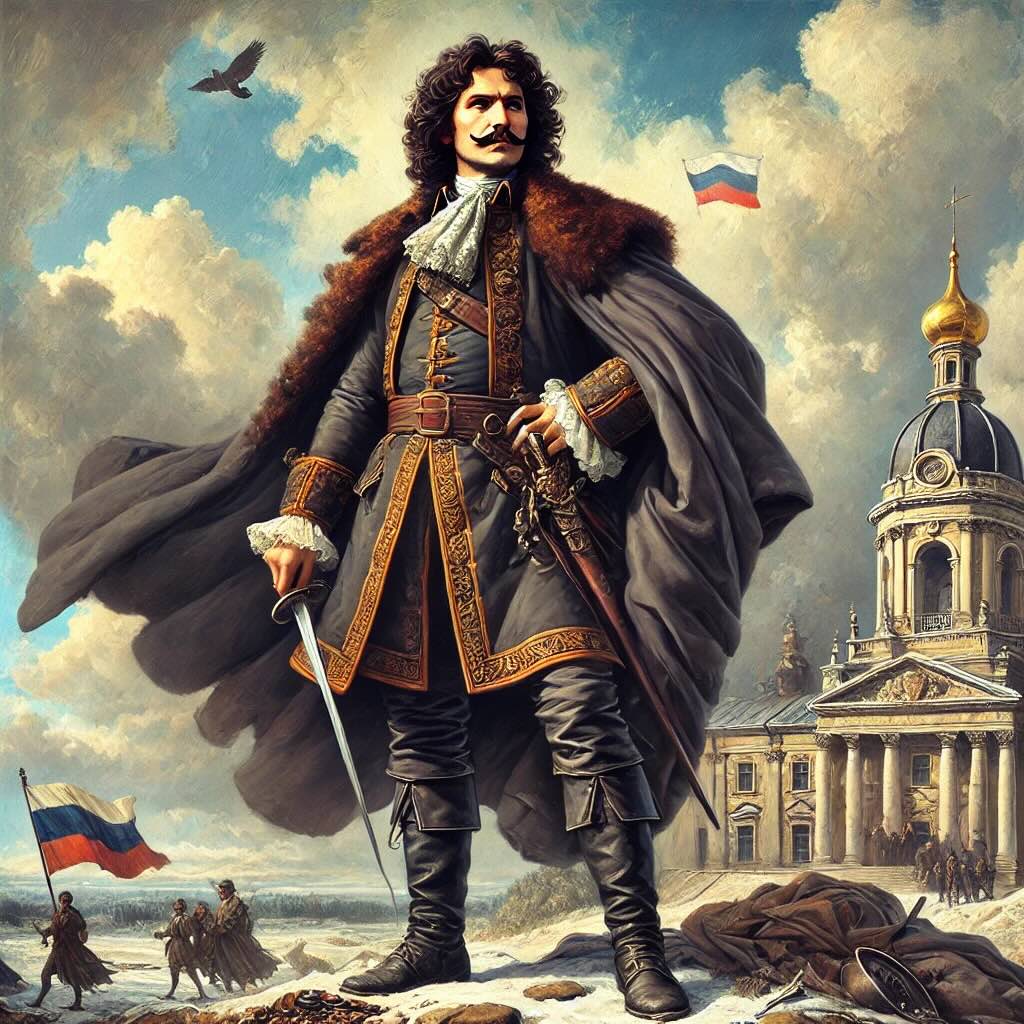Peter I "The Great" (1672-1725)

Peter the Great became czar of Russia in 1682 and dramatically transformed the nation through military conquests and sweeping reforms. He embraced Western technology and culture, modernized Russia’s military, and founded the city of St. Petersburg. His reign, which saw Russia emerge as a major European power, ended in 1725 when his second wife, Catherine, succeeded him.
Peter the Great, born in 1672, became czar of Russia upon the death of his elder brother, Fedor III, in 1682. Initially, Peter was to rule alongside his half-brother Ivan V under the regency of their sister, Sophia. However, Peter’s ambitions quickly led him to challenge this arrangement. Sophia had acted as regent due to Ivan’s weak health and inability to rule, but Peter, eager for control, arrested her in 1689 and sent her to a convent, effectively ending her political influence. Although Ivan V retained the title of co-czar, he was largely a figurehead, and Peter assumed full control of the throne.
One of Peter’s early military ventures came in 1695 when he sent his army to capture the port of Azov from the Ottoman Turks. After a year of conflict, the Russians succeeded, giving Peter a strategic foothold on the Sea of Azov. This victory marked the beginning of Peter’s focus on expanding Russia’s influence and access to the sea.
In 1697, Peter embarked on a remarkable European tour, known as the “Grand Embassy,” a nearly 18-month journey through countries such as Germany, Holland, England, and Austria. The trip was highly unusual for a Russian ruler and served a critical purpose: Peter sought to learn about Western technology, shipbuilding, and military advancements firsthand. He worked incognito in shipyards and factories, absorbing the latest knowledge. Upon returning to Russia, Peter was eager to implement reforms based on his European experiences, which he believed were essential to modernizing his country.
Peter’s enthusiasm for Western ideas, however, was not always welcomed by his subjects. His attempts to reform Russian society—ranging from requiring nobles to adopt Western-style clothing to restructuring the Russian Orthodox Church—met with resistance. Despite this, Peter continued his efforts to push Russia toward a more modern, centralized state.
In 1700, Peter allied with Denmark, Poland, and Saxony to wage the Great Northern War against Sweden. The war, which would last more than two decades, was a central focus of his reign. During this time, Peter founded the city of St. Petersburg in 1703, a new capital on the Baltic Sea that would serve as Russia’s “window to the West.” The war finally ended in 1721 with Sweden’s defeat, allowing Russia to annex territories including parts of Finland, Latvia, Estonia, and Ingria. This victory firmly established Russia as a major European power.
Peter’s personal life was marked by turmoil. His eldest son, Alexei, was arrested on charges of suspected treason and died in prison under mysterious circumstances. Upon Peter’s death in 1725, his second wife, Catherine I, succeeded him, continuing his legacy for a brief period before her own death.
Peter the Great’s reign transformed Russia into a formidable European power, ushering in an era of modernization and military success that would shape the country’s future for centuries. His reforms, while controversial, laid the groundwork for the Russia we know today.
 >
>